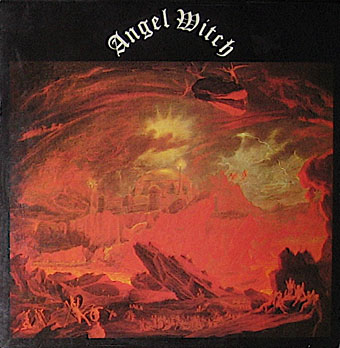
Angel Witch (1980) by Angel Witch. Art: The Fallen Angels Entering Pandemonium (1841).
It’s been a busy week so the posts just now are tending towards haste and laziness. The paintings of John Martin (1789–1854) make such good album covers you’d expect that there were more than this handful. Perhaps there are (Discogs.com contains numerous omissions), in which case leave a comment if you know of any. It’s no surprise that three of these are metal albums when the artist depicted so many apocalypses and scenes from Paradise Lost. Given the recent reappraisal of Martin’s work these won’t be the last albums we see borrowing his art.
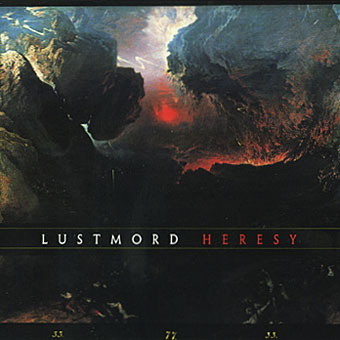
Heresy (1990) by Lustmord. Art: The Great Day of His Wrath (1851).
This is the reissue of Lustmord’s excellent album of doomy volcanic rumbles. Both CDs use the same painting but the new edition has a better type layout.
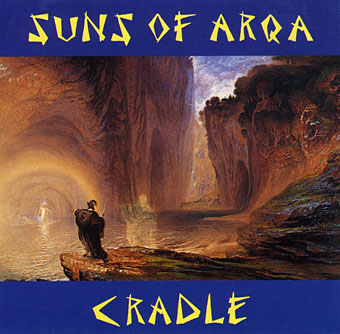
Cradle (1992) by Suns of Arqa. Art: Manfred and the Witch Of The Alps (1837).
A good painting, a decent album (I have this one on CD) by a musical collective from Manchester originally, unfortunately spoiled by dreadful design. The group eventually saw sense and reissued this one with a better layout. The painting is the only example of Martin’s work in Manchester and features a ghostly figure where the artist had painted over an earlier Manfred.
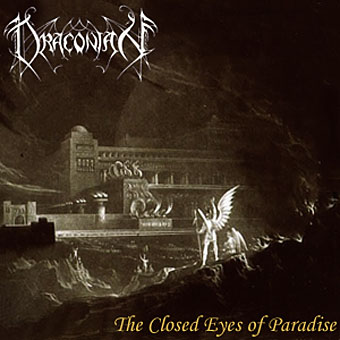
The Closed Eyes of Paradise (demo, 1999) by Draconian. Art: Pandemonium (1838).

Bombs (2006) by Faithless. Art: The Great Day of His Wrath (detail, 1851).
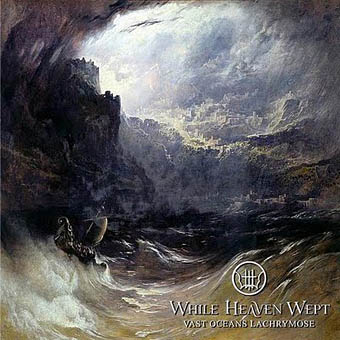
Vast Oceans Lachrymose (2010) by While Heaven Wept. Art: Christ Stilleth The Tempest / Storm On The Sea Of Galilee (1867).
This American metal band appeared in the earlier post about Odilon Redon with the cover of their debut album.
Elsewhere on { feuilleton }
• The album covers archive
Previously on { feuilleton }
• Odilon Redon’s musical afterlife
• Danby’s Deluge
• John Martin: Heaven & Hell
• Darkness visible
• Aubrey Beardsley’s musical afterlife
• Death from above
• The apocalyptic art of Francis Danby

I first saw the Manfred painting back in 1987 and was suitably impressed by the ghostly form to the right of the main figure. It wasn’t until a few years later I found out it was just an erasure, but this actually made me like it more. The idea that Martin decided to exhibit the picture with it’s ‘mistake’ included only makes it even more impressive.
I think the old figure is more apparent to us as a result of the ageing of the paint although I can’t find a confirmation of that. Rather like Géricault’s The Raft of the Medusa which looks a lot darker today than when it was painted because the bitumen the artist mixed into the shadows has aged badly.
Martin is so Metal that he makes the musical genre redundant. I think John’s observation is correct; “pentimenti” (i.e. changes and erasures) typically become more obvious with age due to abrasion or careless restoration of the painted surface.
These paintings really capture an acid trip I once had
The publicity for ‘Damned by Despair’ at the NT is very Martin-esque although for some reason all the online versions only show the top half of the poster. the full version shows the flip-side to what you can see here… http://www.nationaltheatre.org.uk/shows/damned-by-despair